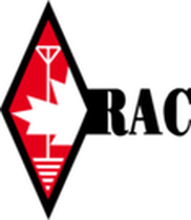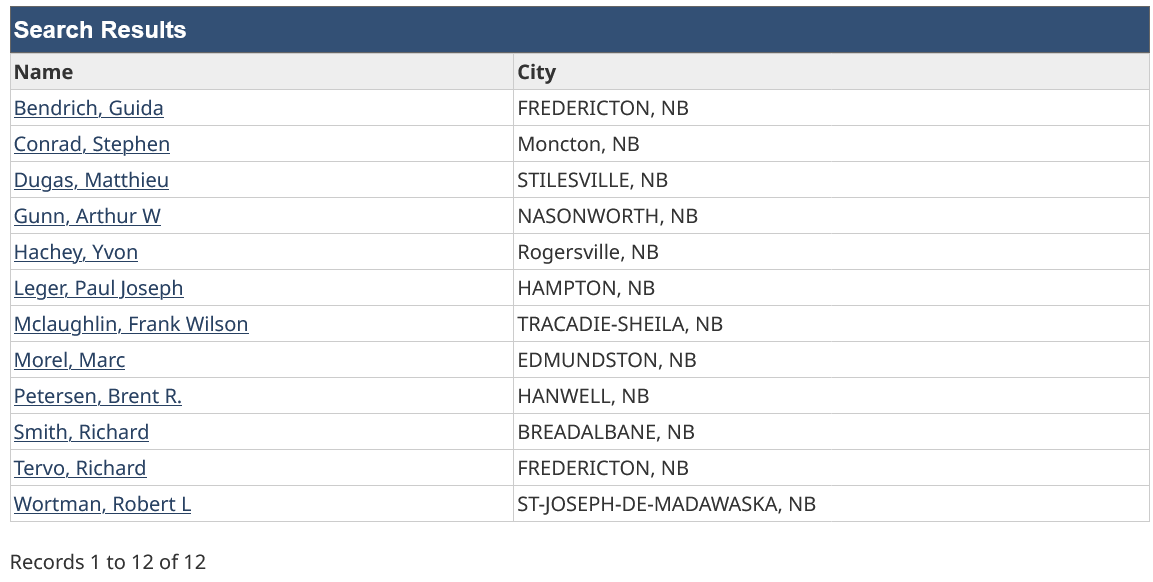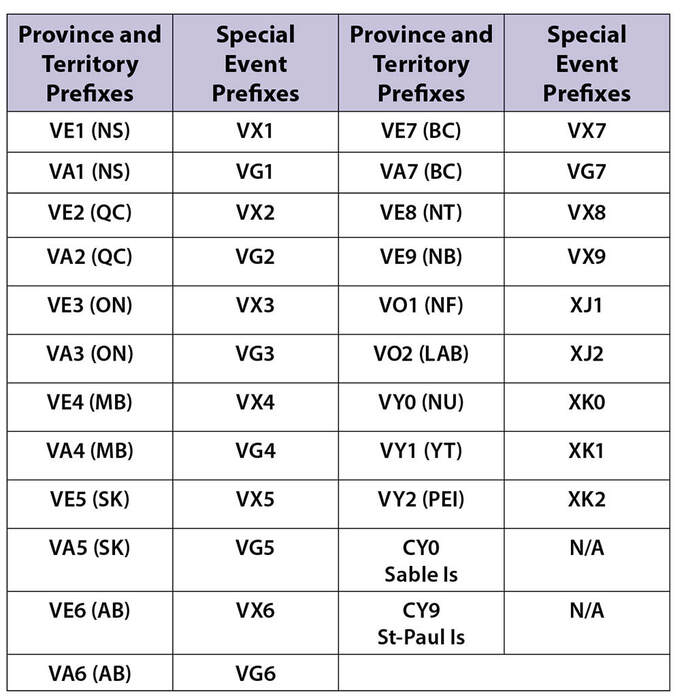This Week In Amateur Radio https://twiar.net/
Amateur radio operators are a vital network in the North Thompson www.barrierestarjournal.com/community/amateur-radio-operators-are-a-vital-network-in-the-north-thompson-7321812
Special Events Call Sign
Time |
Call sign |
Prefix |
Start Date |
End Date |
Name of event |
Trustee |
Coming |
VB4TESTING |
VA4OOF |
2024-06-15 |
2024-08-15 |
Meme Appreciation Month 4: In Search of the Third |
VA4OOF |
Coming |
VB2KILOWAT |
VA2XZA |
2024-06-15 |
2024-08-15 |
Meme Appreciation Month 4: In Search of the Third |
VA2XZA |
Coming |
VC7ZALGO |
VE7LXC |
2024-06-15 |
2024-08-15 |
Meme Appreciation Month 4: In Search of the Third |
VE7LXC |
Coming |
VC7HORSE |
VE7LXC |
2024-06-15 |
2024-08-15 |
Meme Appreciation Month 4: In Search of the Third |
VE7LXC |
Coming |
VB2THEGAME |
VA2HK |
2024-06-15 |
2024-08-15 |
Meme Appreciation Month 4: In Search of the Third |
VA2HK |
Passed |
VY2RCAF |
VY2NX |
2024-04-01 |
2024-04-30 |
100th Anniversary of the RCAF |
VY2NX |
Passed |
VE3RCAF |
VE3IMG |
2024-04-01 |
2024-04-30 |
RCAF 100 Year Anniversary |
VE3OSR |
Passed |
VC3GB |
VE3OSR |
2024-03-22 |
2024-04-21 |
50th Anniversary of the Georgian Bay Amateur Radio Club |
VE3DZ |
Passed |
CG3T |
VE3DZ |
2024-03-01 |
2024-03-31 |
75th Anniversary of the Creation of NATO |
VA3RVK |
Passed |
XL3T |
VA3RVK |
2024-03-01 |
2024-03-31 |
100th Anniversary of the Royal Canadian Air Force |
|
Passed |
XM3U |
VE3EID |
2024-02-01 |
2024-02-29 |
150 Years of The Establishment of The Royal Canadian Airforce |
VE3EID |
Passed |
VC7LWG |
VE7FLN |
2024-02-01 |
2024-02-29 |
Lhtako Winter Games |
VE7LFN |
Passed |
CG2X |
VE2EBK |
2024-02-01 |
2024-02-29 |
100e anniversaire de l’Aviation royale canadienne |
VE2EBK |
Value |
Value |
Value |
||||
Passed |
VE2PEACE |
VE2JCW |
2024-01-01 |
2024-01-30 |
PAIX DANS CE MONDE |
VE2JCW |
RAC Call Sign Policy Survey Results Now Available
In August and September 2022, Radio Amateurs of Canada conducted an online survey open to all Canadian Radio Amateurs. The survey focused on the policy related to call signs, but also covered some other matters. Over 2,300 people participated from every province and territory of Canada.
See it here: https://www.rac.ca/regulatory-advocacy/
New Canadian Frequencies
RBR-4 Update: July 2022
For immediate release:
On July 28, 2022, Innovation Science and Economic Development Canada (ISED) released an update to a very important document for Canadian Radio Amateurs: “RBR-4 – Standards for the Operation of Radio Stations in the Amateur Radio Service”.
The document specifies what frequencies we may operate on and with what bandwidths.
There are two major new additions to our spectrum:
For immediate release:
On July 28, 2022, Innovation Science and Economic Development Canada (ISED) released an update to a very important document for Canadian Radio Amateurs: “RBR-4 – Standards for the Operation of Radio Stations in the Amateur Radio Service”.
The document specifies what frequencies we may operate on and with what bandwidths.
There are two major new additions to our spectrum:
- 472 to 479 kHz, also known as 630 metres: on this new band, we are allowed to run a maximum of five watts EIRP, using emissions with a maximum bandwidth of 1 kHz.
- 5351.5 to 5366.5 kHz in the 60 metre band: this is a new worldwide allocation. Canadian Amateurs are allowed to run a maximum of 100 watts ERP, using emissions with a maximum bandwidth of 2.8 kHz.
The new 60 metre band is in addition to our existing fixed-frequency allocations at 5332, 5348, 5373 and 5405 kHz. The new 15 kHz-wide allocation overlaps our existing authority to use 5358.5 kHz. Canadian Amateurs are unique in having authority to use 100 watts ERP on the four spot frequencies and on the new 15 kHz worldwide segment. Amateurs in most countries are limited to 25 watts or less and may operate only in the new 15 kHz-wide segment.
Please note that Amateur Radio is a Secondary radio service on these bands. Amateurs may not cause harmful interference to Primary users and we may not claim protection from interference by Primary users.
There are other small changes in RBR-4 that bring Canadian Amateur Radio regulations in line with changes agreed at several previous World Radio Conferences (WRCs) of the International Telecommunications Union (ITU).
Radio Amateurs of Canada would like to thank former Regulatory Officer Richard Ferch, VE3KI, for his dedicated work over several years to bring these changes forward.
You can find the English version here:
https://www.ic.gc.ca/eic/site/smt-gst.nsf/eng/sf10650.html
Please note that Amateur Radio is a Secondary radio service on these bands. Amateurs may not cause harmful interference to Primary users and we may not claim protection from interference by Primary users.
There are other small changes in RBR-4 that bring Canadian Amateur Radio regulations in line with changes agreed at several previous World Radio Conferences (WRCs) of the International Telecommunications Union (ITU).
Radio Amateurs of Canada would like to thank former Regulatory Officer Richard Ferch, VE3KI, for his dedicated work over several years to bring these changes forward.
You can find the English version here:
https://www.ic.gc.ca/eic/site/smt-gst.nsf/eng/sf10650.html
Accredited Examiners In New Brunswick
Accredited Examiners are available in many areas throughout Canada to provide both Morse code and written examinations on behalf of Industry Canada. They may be contacted through Amateur Radio clubs, technical schools or the Amateur Radio Service Centre.







